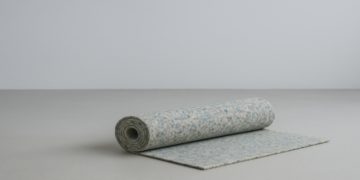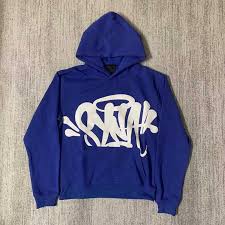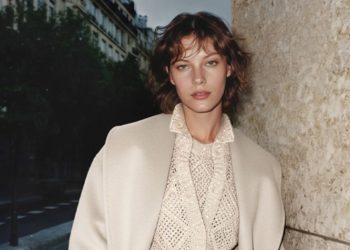A man’s wardrobe speaks volumes about who he is before he utters a single word. Yet many struggle to translate their personality into clothing choices that feel authentic. The challenge lies not in following trends, but in identifying brands that align with individual values, lifestyle demands, and aesthetic preferences. Understanding this connection between personal identity and fashion choices requires examining specific elements that transform ordinary garments into a cohesive style statement worth cultivating.
Understanding Your Personal Style: The Foundation of a Confident Wardrobe
Authenticity distinguishes a well-dressed man from someone merely following trends. Personal style reflects individual values, lifestyle, and aspirations rather than mimicking fashion influencers or celebrities. A man must first assess his daily activities, professional requirements, and social environments to determine appropriate clothing choices.
Self-awareness forms the cornerstone of building a coherent wardrobe. This involves identifying preferred colors, fits, and garment types that complement body shape and skin tone. Men should consider whether they gravitate toward classic, minimalist, rugged, or contemporary aesthetics.
Understanding personal style eliminates unnecessary purchases and reduces closet clutter. It enables confident decision-making when selecting clothing brands that align with individual identity. Men who recognize their authentic preferences develop signature looks that feel natural rather than contrived, ultimately projecting genuine confidence.
Exploring Different Men’s Fashion Categories to Discover What Fits You Best
Once a man understands his authentic preferences, he must explore the distinct fashion categories that define contemporary menswear. Classic styles emphasize timeless pieces like tailored suits, oxford shirts, and leather dress shoes that transcend seasonal trends. Casual wear incorporates comfortable staples such as well-fitted jeans, polo shirts, and sneakers for everyday versatility. Streetwear blends urban influences with bold graphics, oversized silhouettes, and athletic-inspired pieces. Smart casual bridges formal and relaxed elements through chinos, blazers without ties, and loafers.
Each category serves different lifestyle needs and social contexts. A professional environment typically requires classic or smart casual approaches, while creative industries often embrace streetwear aesthetics. Men should experiment across categories to identify which resonates with their daily activities, comfort level, and self-expression goals. This exploration clarifies personal boundaries and preferences before selecting brands.
The Role of a Clothing Shop in Providing Style Guidance and Wardrobe Inspiration
After identifying preferred fashion categories, men benefit from visiting physical clothing shops that offer curated selections and expert assistance. For example, a men’s clothing shop in Scottsdale can provide tailored guidance and regionally influenced style recommendations that align with local lifestyle and climate. Knowledgeable staff members provide personalized styling recommendations based on body type, lifestyle needs, and budget constraints. These professionals help customers understand how different pieces work together, creating versatile outfit combinations from existing inventory.
Quality clothing shops maintain organized displays that demonstrate practical styling techniques, showing coordinated looks rather than isolated garments. This visual merchandising serves as inspiration for men developing their personal style. Additionally, trying clothes in-store allows immediate assessment of fit, fabric quality, and comfort levels.
Many establishments offer complementary services including alterations, seasonal wardrobe consultations, and trend updates. This hands-on guidance accelerates the learning process, helping men build confidence in their fashion choices while discovering brands aligned with their personality.
Why Blanks Clothing Brand Basics Are Essential for Building a Versatile Style
While building a foundation for any wardrobe, men should prioritize blank clothing basics, unbranded, solid-colored essentials that serve as the building blocks of versatile style. These fundamental pieces include plain t-shirts, neutral hoodies, and simple crewnecks that effortlessly complement various outfits. Without distracting logos or graphics, blank basics allow men to layer strategically and mix garments freely across different occasions. Many emerging designers rely on blanks for clothing brand production to create custom collections without sacrificing quality or fit.
The versatility of these essentials proves invaluable when creating both casual and semi-formal looks. A quality blank white tee pairs equally well with jeans for weekend errands or beneath a blazer for business-casual settings. Similarly, neutral-toned basics shift seamlessly between seasons when layered appropriately.
Investing in blank clothing establishes wardrobe consistency while maximizing outfit combinations. These timeless pieces resist trend cycles, ensuring longevity and sustained value throughout years of wear.
Matching Clothing Materials, Fit, and Function to Your Lifestyle and Personality
Beyond acquiring wardrobe basics, men must align their clothing choices with individual lifestyle demands and personal preferences. Material selection proves critical: active professionals benefit from wrinkle-resistant fabrics, while creative individuals might prioritize breathable natural fibers. Fit directly impacts both appearance and confidence, tailored cuts suit formal environments, whereas relaxed silhouettes accommodate casual settings.
Functionality determines practical value. Corporate professionals require structured garments with clean lines, athletes need moisture-wicking materials with stretch, and outdoor enthusiasts depend on weather-resistant options. Personality expression emerges through deliberate choices: minimalists gravitate toward neutral palettes and simple designs, while bold personalities embrace patterns and textures.
Successful style integration occurs when material durability, appropriate fit, and functional design complement daily activities. This strategic approach guarantees clothing serves practical purposes while authentically representing individual character and professional requirements.
Additional Style Tips: Accessorizing, Color Coordination, and Seasonal Wardrobe Planning
Strategic accessorizing transforms basic outfits into polished ensembles through calculated additions of watches, belts, ties, and pocket squares. Quality accessories should complement rather than overpower the foundation pieces, maintaining visual balance throughout the outfit.
Color coordination requires understanding complementary hues and maintaining consistency across garments. Neutral foundations paired with intentional accent colors create versatile combinations suitable for multiple occasions. Men should limit outfits to three primary colors while ensuring metal finishes match across accessories.
Seasonal wardrobe planning demands strategic rotation of fabrics and colors aligned with climate changes. Lightweight linens and cottons dominate summer months, while wool and flannel provide winter warmth. Transitional pieces bridge seasonal gaps, maximizing wardrobe utility. Regular assessment identifies gaps requiring attention, ensuring preparedness for weather variations and social commitments throughout the year.
Conclusion
Finding a clothing brand that truly reflects your personality begins with understanding your own style, lifestyle needs, and comfort preferences. By exploring different fashion categories, investing in versatile basics, and choosing materials and fits that match your daily activities, you create a wardrobe that feels both authentic and functional. Visiting quality clothing shops and seeking expert guidance can further refine your choices and boost confidence. Ultimately, the best style is one that expresses who you are, naturally, comfortably, and consistently, allowing you to present your most genuine self in every setting.













































































